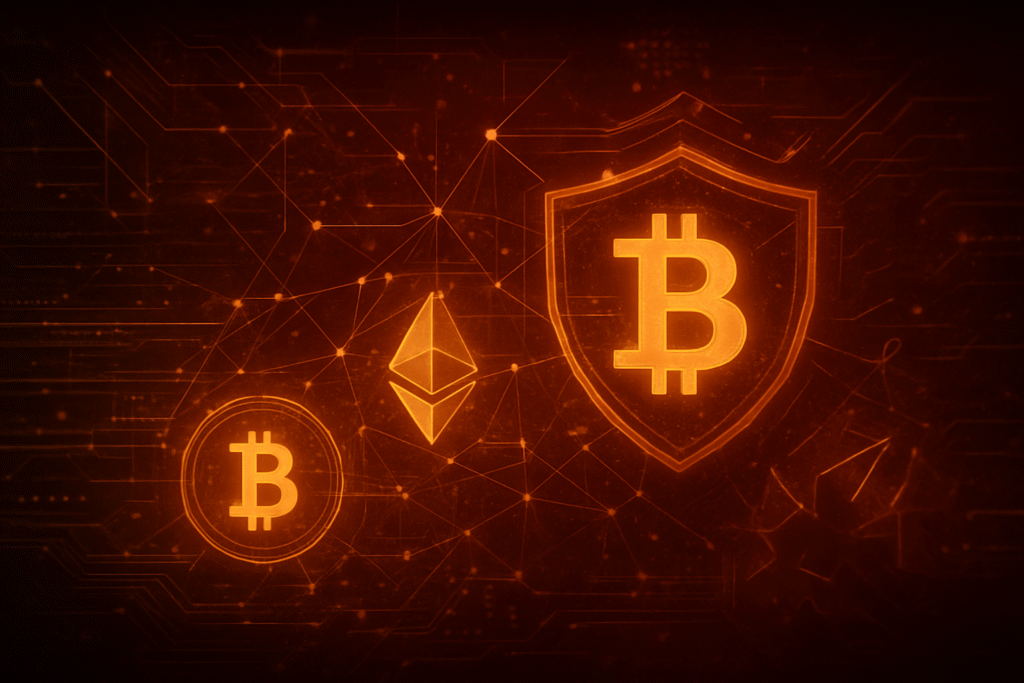
The dynamic and rapidly expanding cryptocurrency ecosystem, valued at over $3.28 trillion by mid-2025, continues to attract millions of users and billions in capital. However, this growth has also made it a prime target for increasingly sophisticated cybercriminals. In the first half of 2025 alone, over $2.17 billion was stolen from cryptocurrency services, with projections suggesting total stolen funds could exceed $4 billion by year's end, making it potentially the worst year on record for digital asset theft. The average loss per victim is also projected to rise significantly to $38,000 in 2025, more than doubling since 2021.
This alarming trend underscores a critical truth: while blockchain technology offers inherent security, the human element and the interfaces we use to interact with crypto remain vulnerable. The ongoing battle against phishing, smart contract exploits, rug pulls, and AI-driven scams is paramount. This article serves as a vital guide for crypto users, empowering them with practical advice and highlighting common scam tactics to protect their digital assets in an ever-evolving threat landscape. The collective responsibility of users, developers, and regulators in fostering a secure environment has never been more evident, as the integrity of the entire Web3 ecosystem hinges on robust security and vigilant fraud prevention.
Market Impact and Price Action
Widespread cryptocurrency scams and major security breaches have consistently demonstrated a profound and multifaceted impact on the broader crypto market, significantly eroding investor confidence and influencing the price action of specific tokens and sectors. These incidents, ranging from massive exchange hacks to sophisticated "rug pulls" and phishing operations, often lead to immediate market volatility and long-term shifts in investor behavior and regulatory scrutiny.
Historically, major breaches have caused substantial financial turmoil across markets. For instance, the February 2025 Bybit hack, which saw approximately $1.5 billion in Ethereum stolen, coincided with a 20% plunge in Bitcoin's price. While the market has shown surprising resilience, with total market capitalization rebounding by mid-2025, the initial shockwaves are undeniable. Bitcoin (BTC) and Ethereum (ETH) often exhibit a significant increase in volatility five days post-incident, pointing to a delayed risk pricing and potential contagion effects. Large-scale hacks on major exchanges can trigger panic and rapid sell-offs, resulting in considerable price volatility across the entire crypto market. Research from 2012-2019 indicates that the scale of a Bitcoin (BTC) hack directly correlates with the intensity of the subsequent price drop.
Fraud fundamentally undermines investor trust and leads to inefficient allocation of resources. The cryptocurrency market is particularly susceptible due to a perceived lack of comprehensive regulatory oversight and robust investor protection measures compared to traditional financial markets. Victims of crypto fraud tend to decrease their investments on similar platforms by approximately 36.5%, a behavioral shift that can persist for at least a year, demonstrating a profound and enduring erosion of trust. This loss of trust isn't confined to the crypto space; victims often reduce their investments in traditional markets as well, indicating a broader loss of confidence in the financial system. The psychological repercussions are significant, including feelings of shock, betrayal, loss of control, and heightened anxiety.
On a micro-level, security breaches generally have a negative impact on the value of the affected tokens. While larger projects may experience less severe damage, financial projects within the blockchain ecosystem often face more significant penalties to their token value following a breach. Timely announcements of a breach, particularly on social media platforms like X (formerly Twitter), can intensify negative market reactions due to the rapid spread of adverse sentiment among investors. Specific types of attacks, such as flash loan exploits, can be used to manipulate prices and drain liquidity pools, directly affecting the value of targeted tokens and protocols. The decentralized finance (DeFi) sector, despite its growth, is a frequent target for scams, with "rug pulls" alone accounting for billions in losses annually and disproportionately affecting retail investors. Negative news concerning a specific project or token can cause it to underperform the broader market, dragging down concentrated portfolios even if the wider market remains stable.
Community and Ecosystem Response
The crypto community, influencers, and projects are increasingly engaged in a comprehensive and evolving response to pervasive security threats and fraud within the digital asset landscape. This multi-faceted approach combines user education, technological advancements, and collaborative initiatives across various platforms and ecosystems.
On social media platforms like Crypto Twitter and Reddit, the sentiment is one of shared responsibility and constant vigilance. Users frequently post about personal scam experiences, offering peer-to-peer advice on how to avoid them. Discussions often highlight the importance of using reputable exchanges, hardware wallets, strong passwords, and two-factor authentication (2FA). A strong recommendation across these platforms is to ignore unsolicited messages, especially those promising free crypto or asking for sensitive information, embodying the "do your own research" (DYOR) mantra. While some "finfluencers" have unfortunately been associated with promoting questionable projects, many legitimate crypto influencers actively contribute to fraud prevention by educating their audience, emphasizing personal security, highlighting due diligence, and warning about impersonation scams.
Within the DeFi and Web3 ecosystems, projects and platforms are implementing extensive measures. This includes robust security protocols like strong encryption, multi-factor authentication (MFA), multi-signature (multisig) wallets, and secure key management practices. Smart contract audits by reputable security firms are now a standard practice to identify and rectify vulnerabilities before deployment. Projects also prioritize secure development practices from the outset and implement threat monitoring and rapid incident response systems. Community-driven initiatives are also gaining traction. The Web3SOC (Web3 Security Operations Consortium), launched by Ethereum (ETH) developers with support from Uniswap Labs (UNI) and Maple Finance (MPL), aims to establish industry-wide standards for compliance and security in the DeFi ecosystem, focusing on rigorous audits, live threat feeds, and secure development methodology. Decentralized insurance protocols offer users protection against potential losses, while bug bounties and audit contests incentivize ethical hackers to discover and report vulnerabilities. Furthermore, AI-powered fraud detection is becoming a significant tool, with companies like 1inch (1INCH) partnering with firms like Innerworks to leverage AI-powered device intelligence for proactive threat detection and neutralization of fraud and bot attacks.
What's Next for Crypto
The ongoing security challenges present both short-term hurdles and long-term implications for the crypto market. In the short term, the financial losses from cyberattacks and scams continue to erode user trust and can deter new entrants, intensifying regulatory scrutiny. However, the crypto market has demonstrated resilience, with recoveries post-hacks indicating an adaptive capacity driven by institutional adoption, DeFi innovation, and evolving regulatory landscapes. Long-term, persistent vulnerabilities could hinder widespread adoption, particularly with the looming threat of quantum computing by the 2030s to 2050s, which could break current cryptographic algorithms. This "harvest now, decrypt later" risk means data encrypted today could be compromised in the future, necessitating a proactive shift to quantum-resistant cryptography.
To counter these threats, a suite of innovative technologies is emerging. Artificial Intelligence (AI) and Machine Learning (ML) are becoming pivotal for real-time fraud detection, analyzing vast datasets to identify unusual transaction patterns, predict threats, and automate risk scoring. Blockchain analytics tools like Chainalysis, Elliptic, and TRM Labs are crucial for tracking suspicious transactions and aiding in KYC (Know Your Customer) and AML (Anti-Money Laundering) compliance. Zero-Knowledge Proofs (ZKPs) offer enhanced privacy by allowing verification of information without revealing the underlying data, while Decentralized Identity (DeID) systems aim to give users more control over their digital identities, reducing reliance on centralized entities. The development and implementation of quantum-resistant cryptography are critical for safeguarding digital assets against future threats.
Regulatory bodies globally are increasing their focus on cryptocurrency security and fraud prevention. In the United States, the Consumer Financial Protection Bureau (CFPB) has proposed rules to extend traditional financial protections to crypto accounts, potentially requiring providers to reimburse fraud victims. The Securities and Exchange Commission (SEC) and the Commodity Futures Trading Commission (CFTC) continue to enforce regulations, with the SEC establishing a Cyber and Emerging Technologies Unit (CETU) and a Crypto Task Force. Globally, the European Union's Markets in Crypto-Assets Regulation (MiCA) enforces stricter KYC and AML compliance, while countries like Brazil, South Korea, and the UK are implementing their own protective frameworks. These regulatory developments aim to mitigate risks, build trust, and integrate crypto into the broader financial system.
Industry initiatives are also bolstering security. Centralized exchanges (CEXs) are implementing robust security measures, including multi-factor authentication, cold storage, and regular security audits. The shift towards greater transparency is seen with initiatives like Proof of Reserves (PoR) and on-chain audits, providing publicly verifiable cryptographic attestations of customer balances. There's an increasing emphasis on collaboration between exchanges, security firms, developers, and law enforcement to share information about fraud attempts. The availability and adoption of hardware wallets with advanced security features empower users to take more direct control over their private keys. Potential catalysts for enhanced user protection include regulatory clarity and harmonization, the maturation of AI and ML in fraud detection, wider adoption of advanced cryptographic techniques, increased transparency through Web3 assurance models, and a focus on user-centric security by design.
Bottom Line
The current crypto landscape, as of late 2025, presents a paradox: immense innovation alongside persistent and evolving security threats. The staggering financial losses to scams and hacks underscore that while the underlying blockchain technology is robust, the points of interaction—human behavior and application interfaces—remain the weakest links. For crypto investors and enthusiasts, the key takeaway is clear: personal security is paramount. Adopting best practices such as using hardware wallets for cold storage, enabling multi-factor authentication on all accounts, exercising extreme caution with unsolicited messages and "too good to be true" offers, and performing thorough due diligence on any project or platform are no longer optional but essential.
The long-term significance of robust security and fraud prevention cannot be overstated. It is the bedrock upon which mainstream crypto adoption will be built. As institutional investors continue to enter the space, their demand for stringent security, compliance, and insurance will drive the entire industry to adopt higher standards. The ongoing efforts in AI-powered threat detection, quantum-resistant cryptography, and harmonized global regulations are critical developments to monitor. These advancements, coupled with continuous user education, will gradually build a more secure and trustworthy ecosystem.
Ultimately, the future of crypto adoption hinges on trust. Every successful hack or widespread scam erodes that trust, while every innovative security solution and successful fraud prevention initiative strengthens it. Important metrics to monitor include the total value locked (TVL) in secure DeFi protocols, the adoption rate of hardware wallets, and the effectiveness of new regulatory frameworks in reducing illicit activities. The journey towards a fully secure and universally trusted crypto environment is ongoing, requiring collective vigilance, technological innovation, and a commitment to user protection from all stakeholders.
This article is for informational purposes only and does not constitute financial or investment advice. Cryptocurrency investments carry significant risk.






